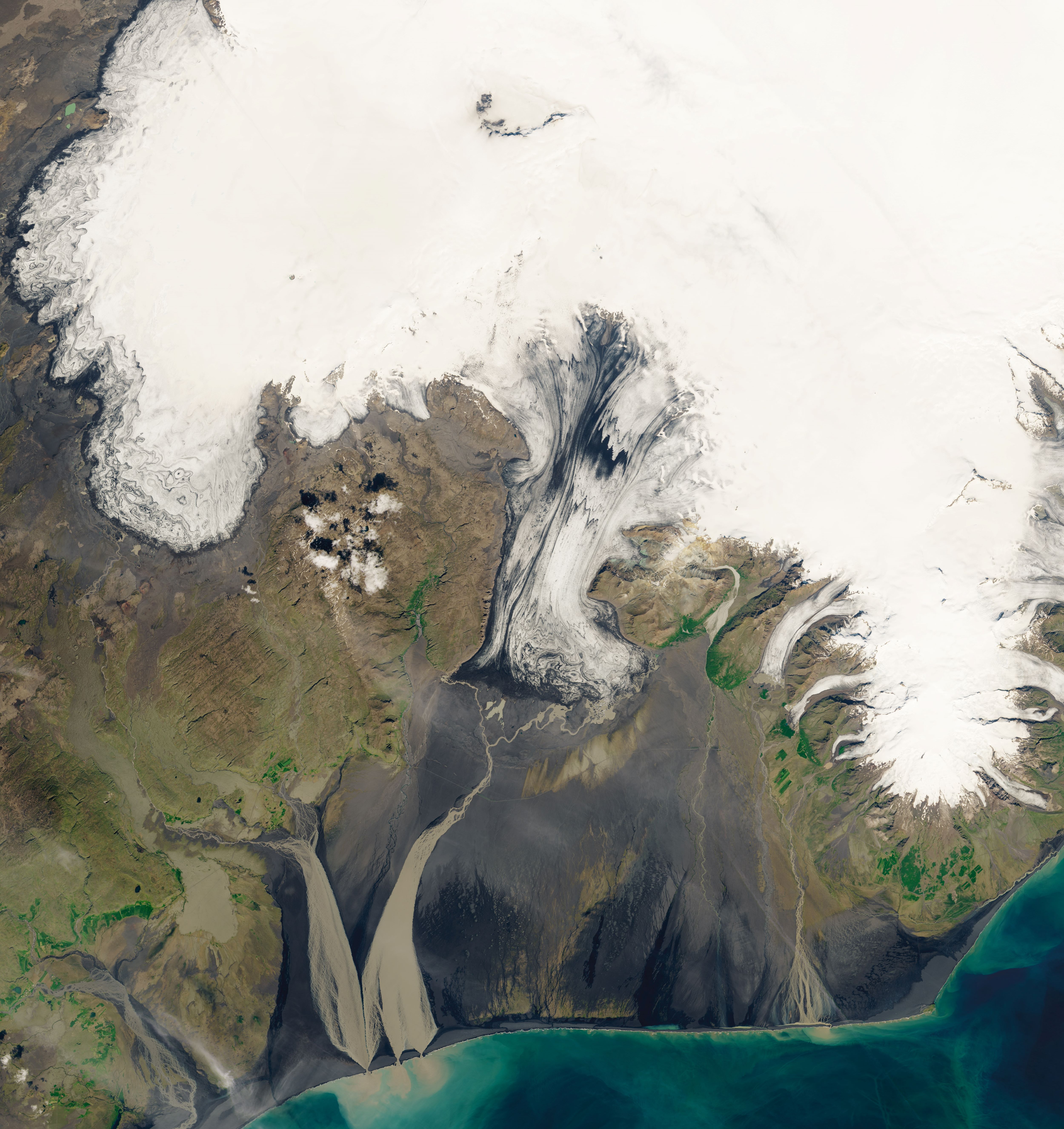[:ja]NASAの地球観測衛星Landsat 8が撮影したアイスランドのスキェイザルアゥルヨークトル氷河です。

スキェイザルアゥルヨークトル氷河は、アイスランドで最大で国土の8%を覆うヴァトナヨークトル氷河の南端の一部です。この国立公園の地下水には氷河期を生き残った生物が見られます。他天体の生命の可能性を議論すべく、多くの科学者が生物にとって極限環境であるこの地域の氷河湖の単細胞生物を調べに来ます。また、ヴァトナヨークトル国立公園はUNESCOの世界遺産にも登録されています。
地上の様子はこちらです。

参考文献: Iceland’s Volcanic Glacier (NASA Earth Observatory)
地球俯瞰画像を見る: LiVEARTH
[Earthview Wonders] No.939: Skeiðarárjökull Glacier, Iceland🇮🇸
NASA’s Landsat 8 satellite captured the Skeiðarárjökull Glacier, Iceland.

Skeiðarárjökull is located in the southern region of Vatnajökull National Park, which covers about 14% of the country. The park’s volcanic zones hold many groundwater fauna that has survived the ice age. Many scientists come to Vatnajökull to study the single-celled organisms that live in the park’s subglacial lakes because these inhospitable environments may be similar to those on Jupiter and Saturn. Because of its unique convergence of glaciers and volcanoes, Vatnajökull is listed as a UNESCO World Heritage Site.
The local scenery on the ground is as follows.

Reference: Iceland’s Volcanic Glacier (NASA Earth Observatory)
See earthview photo gallery: LiVEARTH[:en][Earthview Wonders] No.939: Skeiðarárjökull Glacier, Iceland🇮🇸
NASA’s Landsat 8 satellite captured the Skeiðarárjökull Glacier, Iceland.

Skeiðarárjökull is located in the southern region of Vatnajökull National Park, which covers about 14% of the country. The park’s volcanic zones hold many groundwater fauna that has survived the ice age. Many scientists come to Vatnajökull to study the single-celled organisms that live in the park’s subglacial lakes because these inhospitable environments may be similar to those on Jupiter and Saturn. Because of its unique convergence of glaciers and volcanoes, Vatnajökull is listed as a UNESCO World Heritage Site.
The local scenery on the ground is as follows.

Reference: Iceland’s Volcanic Glacier (NASA Earth Observatory)
See earthview photo gallery: LiVEARTH[:]